Schedule
Cassava Crop Schedule
| Product Name | Fertilizers | ||||||||
|---|---|---|---|---|---|---|---|---|---|
| PROM/ Organic Fertilizer |
Poornima Kit | NPK Caps | Humigrow Nano Powder |
Alp | Sonha-Bihan | IBP Kit | |||
| Humic Acid | Chelated Multi-micronutrient |
PGP/PGR | |||||||
| Land Reparation | month -2 | ||||||||
| Soil Treatment | month -1 | 1 Kit | |||||||
| Seed Sowing | month 0 | 50kg | |||||||
| Germination | month 1 | 1 Kit | |||||||
| Vegetative Growth | month 2 | ||||||||
| month 3 | 2 Caps | 120gm | |||||||
| month 4 | 500gm | 250gm | |||||||
| month 5 | 1 Kit | ||||||||
| month 6 | |||||||||
| month 7 | 2 Caps | 120gm | |||||||
| month 8 | |||||||||
| Harvesting | |||||||||
| Total Quantity | 50kg | 2 Kit | 4 Caps | 240gm | 500gm | 250gm | 1 Kit | ||
| Broadcast | |
| Top Dressing | |
| Basal Dressing | |
| Soil Application | |
| Spray | |
| * | Optional |
NOTE: For the first year donot immidietaly substitute 100% chemical fertilizer with the SIESTO GREEN products, as the soil is used to chemical fertilizer, it may affect the output. So the best way to substitute is by reducing 50% of chemical input in the first year, 25% the following 2nd year, & then another 10% by the 3rd year. After the 3rd year use synthetic fertilizer / inorganic fertilizer if their is a requirement depending on the soil health.
CROP SCHEDULE FOR CASSAVA
Sr. No.
Treatment / Application
Product
Dose / Acre
APPLICATION
Management
1
Vegetative – Dissolve in 20 to 200 liters of water as required for 1 acre of land and apply through Drip Irrigation or drench.
POORNIMA KIT
1 Kit
Apply after germination.
It is a balanced form of nutrients that includes NPK, Zinc, Cropforce NP, Humigrow NP, and Mycorrhiza NP
2
Vegetative – Mix all with the required amount of water and apply through drip irrigation, flood irrigation, or drenching as per farmer’s availability.
NPK + Humigrow
2 Caps + 120gm
Apply it in month 3
It is a balanced form of Nutrition that includes NPK.
OPTIONAL
Sr. No.
Treatment / Application
Product
Dose / Acre
APPLICATION
1
Soil Treatment – Dissolve in 20lit. to 200lit. of water as per requirement for 1 acre of land and apply through drip irrigation or drench.
IBP KIT
1 kit
It prevents soil-born diseases and nematodes. Apply as per the soil health and soil-born diseases.
2
Transplantation – Before transplanting basal it.
PROM / Organic fertilizer
50 kg/acre
Apply during transplantation as per soil health, weather conditions, and plant needs.
3
Vegetative – Mix all with the required amount of water and apply through drip irrigation, flood irrigation, or drenching as per farmer’s availability.
NPK + Humigrow
2 Caps + 120gm
Apply as per plant needs.
4
Fruiting – Mix it in the required amount of water and apply through Drip irrigation or Drench near the plants.
ALP + Sonha-Bihan
500gm + 250gm
Apply as per plant needs.
PEST ATTACKS, BACTERIAL, OR FUNGAL MANAGEMENT
PEST / BACTERIAL / FUNGAL
IDENTIFICATION IN CROP
SYMPTOMS
SUGGESTED PRODUCT
Cassava Mealybug
 The cassava mealybug has a body that is encompassed by short fibers, and secured with a fine covering of wax, it is pinkish in color.
Traps + Meta
Striped Mealybug
The cassava mealybug has a body that is encompassed by short fibers, and secured with a fine covering of wax, it is pinkish in color.
Traps + Meta
Striped Mealybug
 Is a whitish mealybug with two longitudinal dull stripes, long polished wax strings, and two long tails. The striped mealybug happens on the underside of leaves close to the petioles and on the stems. It sucks sap yet doesn’t infuse any poison into plants.
Traps + Meta
Cassava Green Arachnid Bug
Is a whitish mealybug with two longitudinal dull stripes, long polished wax strings, and two long tails. The striped mealybug happens on the underside of leaves close to the petioles and on the stems. It sucks sap yet doesn’t infuse any poison into plants.
Traps + Meta
Cassava Green Arachnid Bug
 They show up as yellowish-green spots to the unaided eye. They happen on the lower surface of youthful leaves, green stems, and assistant buds of cassava.
Lifeline + Traps + Meta + BT
Red Spider Mites
They show up as yellowish-green spots to the unaided eye. They happen on the lower surface of youthful leaves, green stems, and assistant buds of cassava.
Lifeline + Traps + Meta + BT
Red Spider Mites
 The beginning side effects are yellowish pinpricks along the principal vein of developing leaves.
Lifeline + Traps + Meta + BT
Cassava Scales
The beginning side effects are yellowish pinpricks along the principal vein of developing leaves.
Lifeline + Traps + Meta + BT
Cassava Scales
 This scale may cover the stem with obvious white emissions and in the end the leaves. This scale sucks from the stem and dries out it.
BT
Whiteflies
This scale may cover the stem with obvious white emissions and in the end the leaves. This scale sucks from the stem and dries out it.
BT
Whiteflies
 Sustaining causes direct harm, which may cause an impressive decrease in root yield whenever delayed bolstering happens. A few whiteflies cause significant harm to cassava as vectors of cassava infections.
Lifeline
Termites
Sustaining causes direct harm, which may cause an impressive decrease in root yield whenever delayed bolstering happens. A few whiteflies cause significant harm to cassava as vectors of cassava infections.
Lifeline
Termites
 They bite and eat stem cuttings which develop inadequately, pass on, and decay. They may wreck entire estates. In more seasoned cassava plants termites bite and enter the stems.
BT
Anthracnose
They bite and eat stem cuttings which develop inadequately, pass on, and decay. They may wreck entire estates. In more seasoned cassava plants termites bite and enter the stems.
BT
Anthracnose
 Cankers on stems and leaf petioles; leaves drooping downwards; wilting leaves which die and fall from plant leading to plant defoliation; death of shoots; soft parts of plant become twisted and distorted.
Indofa
Cassava Brown Leaf Spot
Cankers on stems and leaf petioles; leaves drooping downwards; wilting leaves which die and fall from plant leading to plant defoliation; death of shoots; soft parts of plant become twisted and distorted.
Indofa
Cassava Brown Leaf Spot
 Circular or irregular brown spots with darker margins between leaf veins on older leaves; if an infection is severe, leaves may turn yellow, dry out, and drop from the plant.
Indofa
White Leaf Spot
Circular or irregular brown spots with darker margins between leaf veins on older leaves; if an infection is severe, leaves may turn yellow, dry out, and drop from the plant.
Indofa
White Leaf Spot
 Large, diffuse white spots on the upper surface of leaves; spots with grey center on the underside of leaves in humid weather.
Indofa
Witches Broom
Large, diffuse white spots on the upper surface of leaves; spots with grey center on the underside of leaves in humid weather.
Indofa
Witches Broom
 Plants are stunted with excessive proliferation of branches; shoots have small leaves and shortened internodes; no chlorosis is present; cuttings from the shoots are weak but show no visible symptoms; few shoots successfully grow from cuttings.
Indofa
Cassava Bacterial Blight
Plants are stunted with excessive proliferation of branches; shoots have small leaves and shortened internodes; no chlorosis is present; cuttings from the shoots are weak but show no visible symptoms; few shoots successfully grow from cuttings.
Indofa
Cassava Bacterial Blight
 Small, angular, brown, water-soaked lesions between leaf veins on lower surfaces of leaves; leaf blades turning brown as lesion expands.
Indofa + Bacillus
Small, angular, brown, water-soaked lesions between leaf veins on lower surfaces of leaves; leaf blades turning brown as lesion expands.
Indofa + Bacillus
 The cassava mealybug has a body that is encompassed by short fibers, and secured with a fine covering of wax, it is pinkish in color.
Traps + Meta
Striped Mealybug
The cassava mealybug has a body that is encompassed by short fibers, and secured with a fine covering of wax, it is pinkish in color.
Traps + Meta
Striped Mealybug
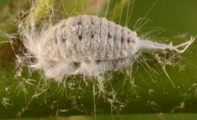 Is a whitish mealybug with two longitudinal dull stripes, long polished wax strings, and two long tails. The striped mealybug happens on the underside of leaves close to the petioles and on the stems. It sucks sap yet doesn’t infuse any poison into plants.
Traps + Meta
Cassava Green Arachnid Bug
Is a whitish mealybug with two longitudinal dull stripes, long polished wax strings, and two long tails. The striped mealybug happens on the underside of leaves close to the petioles and on the stems. It sucks sap yet doesn’t infuse any poison into plants.
Traps + Meta
Cassava Green Arachnid Bug
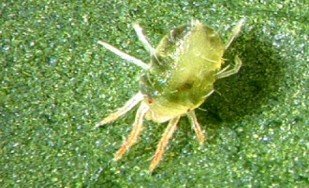 They show up as yellowish-green spots to the unaided eye. They happen on the lower surface of youthful leaves, green stems, and assistant buds of cassava.
Lifeline + Traps + Meta + BT
Red Spider Mites
They show up as yellowish-green spots to the unaided eye. They happen on the lower surface of youthful leaves, green stems, and assistant buds of cassava.
Lifeline + Traps + Meta + BT
Red Spider Mites
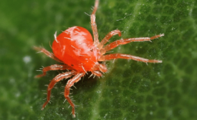 The beginning side effects are yellowish pinpricks along the principal vein of developing leaves.
Lifeline + Traps + Meta + BT
Cassava Scales
The beginning side effects are yellowish pinpricks along the principal vein of developing leaves.
Lifeline + Traps + Meta + BT
Cassava Scales
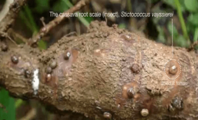 This scale may cover the stem with obvious white emissions and in the end the leaves. This scale sucks from the stem and dries out it.
BT
Whiteflies
This scale may cover the stem with obvious white emissions and in the end the leaves. This scale sucks from the stem and dries out it.
BT
Whiteflies
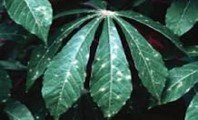 Sustaining causes direct harm, which may cause an impressive decrease in root yield whenever delayed bolstering happens. A few whiteflies cause significant harm to cassava as vectors of cassava infections.
Lifeline
Termites
Sustaining causes direct harm, which may cause an impressive decrease in root yield whenever delayed bolstering happens. A few whiteflies cause significant harm to cassava as vectors of cassava infections.
Lifeline
Termites
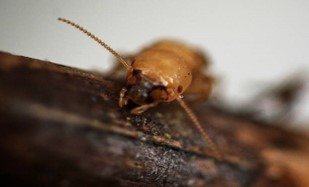 They bite and eat stem cuttings which develop inadequately, pass on, and decay. They may wreck entire estates. In more seasoned cassava plants termites bite and enter the stems.
BT
Anthracnose
They bite and eat stem cuttings which develop inadequately, pass on, and decay. They may wreck entire estates. In more seasoned cassava plants termites bite and enter the stems.
BT
Anthracnose
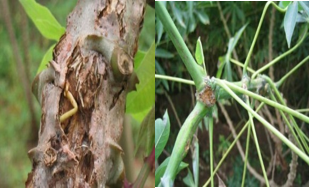 Cankers on stems and leaf petioles; leaves drooping downwards; wilting leaves which die and fall from plant leading to plant defoliation; death of shoots; soft parts of plant become twisted and distorted.
Indofa
Cassava Brown Leaf Spot
Cankers on stems and leaf petioles; leaves drooping downwards; wilting leaves which die and fall from plant leading to plant defoliation; death of shoots; soft parts of plant become twisted and distorted.
Indofa
Cassava Brown Leaf Spot
 Circular or irregular brown spots with darker margins between leaf veins on older leaves; if an infection is severe, leaves may turn yellow, dry out, and drop from the plant.
Indofa
White Leaf Spot
Circular or irregular brown spots with darker margins between leaf veins on older leaves; if an infection is severe, leaves may turn yellow, dry out, and drop from the plant.
Indofa
White Leaf Spot
 Large, diffuse white spots on the upper surface of leaves; spots with grey center on the underside of leaves in humid weather.
Indofa
Witches Broom
Large, diffuse white spots on the upper surface of leaves; spots with grey center on the underside of leaves in humid weather.
Indofa
Witches Broom
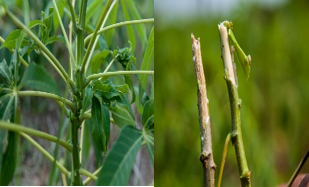 Plants are stunted with excessive proliferation of branches; shoots have small leaves and shortened internodes; no chlorosis is present; cuttings from the shoots are weak but show no visible symptoms; few shoots successfully grow from cuttings.
Indofa
Cassava Bacterial Blight
Plants are stunted with excessive proliferation of branches; shoots have small leaves and shortened internodes; no chlorosis is present; cuttings from the shoots are weak but show no visible symptoms; few shoots successfully grow from cuttings.
Indofa
Cassava Bacterial Blight
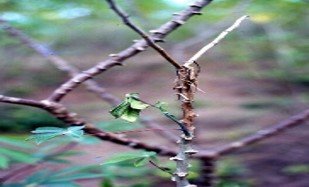 Small, angular, brown, water-soaked lesions between leaf veins on lower surfaces of leaves; leaf blades turning brown as lesion expands.
Indofa + Bacillus
Small, angular, brown, water-soaked lesions between leaf veins on lower surfaces of leaves; leaf blades turning brown as lesion expands.
Indofa + Bacillus
NUTRITION DEFICIENCY
NUTRIENT
SYMPTOMS
SUGGESTED PRODUCT
Nitrogen
Reduced Plant growth, uniform chlorosis of leaves, starting with lower leaves, but soon spreading throughout the plant.
Azoss
Potassium
Reduced plant growth with excessive branching, resulting in prostrate plant type. Small, sometimes chlorotic upper leaves; thick stems with short internodes.
Potash Grow
Phosphorus
Reduced plant growth, thin stems, short petioles; sometimes pendant leaves. Lower leaves turn purplish/brown.
PSB Plus
Sulphur
Uniform chlorosis of upper leaves, which soon spreads throughout the plant.
Sulphur Grow caps
Boron
Reduced plant height, short internodes, short petioles, and deformed upper leaves.
ALP
Copper
Deformation and uniform chlorosis of upper leaves, with leaf tips and margins bending up or downward.
ALP


